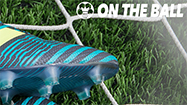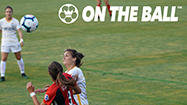Are your knees in pain when you play football…? You can have flat feet...
April 21, 2020

Pain and inflammation in soccer players are usually because of the effort and the constant pressure at which the lower joints of the body are subjected.
Like an engine, when gear fails, the rest of the system begins to trank until it collapses. If you feel knee pain, the problem may come from below.
Ankles and knees are intimately linked to the shape of the footprint, and the mechanics of movement and on the articular cartilage are affected when, due to an irregular shape of the foot support, the pressure exerted on them is uneven.
Cases of flat feet, by definition, are the absence or little pronunciation of the normal arches of the feet on which the whole body leans. This generally forms around the 3 years of age of the child, as the fat and elasticity of the ligaments of the foot disappear. The causes of having a more or less pronounced arch, in the first instance, are associated with genetic reasons, however, good footwear from childhood is also a determining factor for its adequate training. Already in the childhood stage, the pediatrician can be visualized if there are conditions or not to send him to an Orthopedist and take actions to correct it and avoid knee injuries in the future.
However, in general, we have different feet and each one with a different arch. Not all soccer shoes are the same, nor do they conform to our footprint. Even more, playing soccer on a constant basis on soccer cleats can increase the risk when having arch issues. During a 90 minutes match, who have suffered from ankles and knees know how painful it is to run 21 to 42 kilometers with inappropriate shoes or knee pain.
Flat feet, Pronators feet, are those that have an almost non-existent arch, and therefore their irregular tread leads them to tilt their ankle towards the legs. Consequently, the knee does not rotate evenly, it rotates unevenly and the tendons that hold the knee bones in position begin to suffer.
On the opposite side, Supinators have an extremely pronounced plantar vault, forcing you to tilt your ankle out, and again, the tendons that make up the knee joint will feel the domino effect that originates from your footfall.
Only those with a neutral tread should buy any soccer shoes without much trouble. And although some soccer shoe brands offer shoes for over pronator or supinator, it is advisable to do a footprint analysis with a specialist, and develop orthotics or insoles suitable for your foot with the specific corrections of your footprint.
Always talk to your coach. He is a professional capable of pointing you in the right direction, with the right specialist to help you avoid soccer injuries like sprains and strains.
It is vital, if playing soccer is part of your daily life, to practice sports with suitable shoes that do not cause pain that can start from the sole of the foot to the hip.
If you suffer from pain in your joints or not, we still recommend that after the game race you apply ice to your joints, do not wait for the tendons to collapse and suffer a ligament rupture, or that due to incorrect movement mechanics you have meniscus problems in your knees and frustrate your dreams of playing soccer in the Major League Soccer MLS or the Premier League.
One last recommendation. Like the rubbers on your vehicle, shoes lose cushioning and grip when worn. If you train with the best soccer training app daily, or very often, even if they look good, change your sneakers every 6 months on average, it is cheaper than going to the doctor and being locked up like a tiger in a cage for not being able to go kick the soccer ball. Buy soccer shoes of suitable size with proper soccer cleats that will not hurt your toes, with an insole suitable for your plantar arch.
Playing soccer should be a pleasant experience, not a way of the cross. Prepare yourself using the correct equipment, using the best training app with the best soccer coaches and players and elevate your game with OnTheBall.
Popular Blogs















.png)